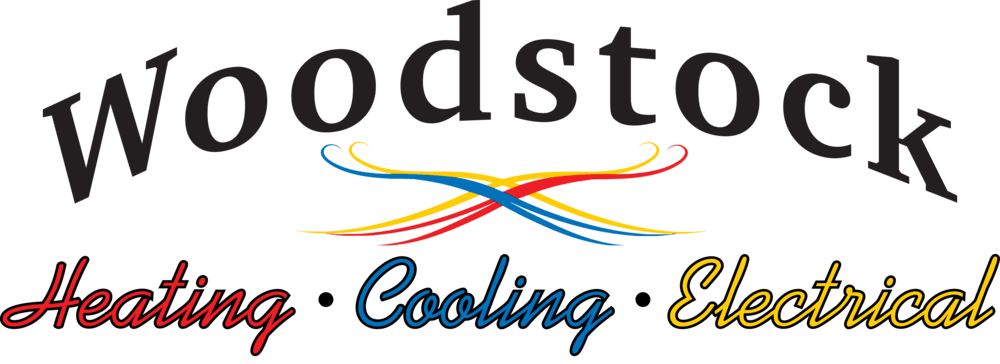Understanding Whole Home Surge Protection
Power surges represent one of the most overlooked threats to modern homes, capable of destroying thousands of dollars worth of electronics and appliances in milliseconds. At Woodstock Heating, Cooling, and Electrical, we’ve witnessed firsthand the devastating effects of electrical surges on HVAC systems, smart home devices, and essential household equipment. A whole home surge protector acts as your property’s first line of defense, intercepting dangerous voltage spikes before they can infiltrate your electrical system and cause catastrophic damage.
The technology behind surge protection has evolved dramatically over the past decade, moving far beyond simple power strips to sophisticated systems that monitor and regulate your entire home’s electrical supply. These advanced protectors work by detecting abnormal voltage levels and instantly diverting excess electricity to the ground wire, preventing it from reaching your valuable electronics. Modern surge protectors can respond in less than a nanosecond, providing protection that’s literally faster than lightning.
Common Sources of Electrical Surges
While many homeowners associate power surges exclusively with lightning strikes, the reality is that over 80% of surge-related damage comes from internal sources within your own home. Every time a major appliance like your air conditioner or refrigerator cycles on and off, it creates small power fluctuations that accumulate over time, gradually degrading sensitive electronics. We regularly encounter situations where homeowners are puzzled by premature HVAC control board failures, not realizing that hundreds of minor surges have been slowly destroying their equipment’s internal components.
External surge sources pose equally significant threats to your home’s electrical infrastructure. Utility grid switching, downed power lines, and accidents involving electrical equipment can all send massive voltage spikes through neighborhood power systems. During our century of service in Woodstock, IL and surrounding areas, we’ve observed that homes near industrial areas or major roadways face particularly high risks of external surges due to increased electrical activity and infrastructure vulnerabilities in these zones.
How Whole Home Surge Protectors Work
The engineering behind whole home surge protection involves multiple layers of defense working in concert to safeguard your property. Primary protection begins at your electrical panel, where a Type 2 surge protective device (SPD) monitors incoming voltage levels continuously. These devices utilize metal oxide varistors (MOVs) that act like pressure relief valves for electricity, remaining dormant during normal conditions but instantly activating when voltage exceeds safe thresholds.
The protection process occurs through a sophisticated sequence of events that happens almost instantaneously. When excessive voltage enters your home’s electrical system, the surge protector’s MOVs change from a high-resistance state to a low-resistance state, creating a pathway for the dangerous electricity to flow harmlessly to ground. This diversion happens so quickly that your sensitive electronics never experience the damaging voltage spike. After the surge passes, the protector automatically resets itself, ready to defend against the next threat.
Benefits of Professional Installation
Installing a whole home surge protector requires extensive knowledge of electrical systems and local building codes, making professional installation essential for both safety and effectiveness. Our certified technicians at Woodstock Heating, Cooling, and Electrical understand the critical importance of proper grounding, which forms the foundation of any effective surge protection system. Without adequate grounding, even the most expensive surge protector cannot function correctly, leaving your home vulnerable to electrical damage.
The installation process involves careful assessment of your home’s electrical panel capacity, existing wiring condition, and specific protection needs based on your equipment inventory. We evaluate factors such as your panel’s available space, amperage rating, and the presence of sub-panels that might require additional protection. This comprehensive approach ensures that your surge protection system integrates seamlessly with your existing electrical infrastructure while providing maximum coverage for all circuits in your home.
Protecting Your HVAC Investment
Modern heating and cooling systems contain sophisticated electronic components that are particularly vulnerable to power surges. Variable-speed motors, smart thermostats, and computerized control boards found in today’s high-efficiency HVAC equipment can suffer irreparable damage from even moderate voltage spikes. Having served Woodstock, IL; Crystal Lake, IL; Huntley, IL; McHenry, IL; Lake in the Hills, IL; Cary, IL; Algonquin, IL; Bull Valley, IL; and Village of Lakewood, IL for over a century, we’ve seen countless cases where a single surge event destroyed expensive HVAC components that could have been protected with proper surge suppression.
The financial impact of surge damage to HVAC systems extends beyond immediate repair costs. When electronic components fail due to surge damage, it often voids manufacturer warranties, leaving homeowners responsible for expensive replacements. Additionally, surge-damaged equipment frequently experiences intermittent problems before complete failure, leading to reduced efficiency, higher energy bills, and decreased comfort levels throughout your home.
Surge Protection Technology and Standards
- Clamping Voltage: The voltage level at which the protector begins diverting excess electricity, typically ranging from 330 to 400 volts for residential applications
- Joule Rating: The amount of energy the protector can absorb before requiring replacement, with quality whole home units offering 1,500 to 4,000 joules of protection
- Response Time: How quickly the device reacts to voltage spikes, measured in nanoseconds for modern protectors
- Maximum Surge Current: The highest amperage the device can safely handle, usually between 20,000 and 50,000 amps for residential models
Understanding these specifications helps homeowners make informed decisions about surge protection investments. The Underwriters Laboratories (UL) 1449 standard governs surge protective devices, establishing rigorous testing requirements that ensure products meet specific safety and performance criteria. We only install surge protectors that meet or exceed these standards, providing our customers with proven protection they can trust.
Cost Considerations and Return on Investment
The investment in whole home surge protection typically ranges from several hundred to a few thousand dollars, depending on your home’s specific needs and the level of protection desired. When compared to the potential losses from surge damage, which can easily exceed tens of thousands of dollars in a single event, the return on investment becomes immediately apparent. Insurance industry data indicates that homes with professional surge protection experience 80% fewer claims related to electrical damage.
Beyond preventing catastrophic losses, surge protection provides ongoing value through extended equipment lifespans and reduced maintenance costs. Electronics and appliances operating in surge-protected environments typically last 30% longer than those exposed to unfiltered power, translating to significant savings over time. For homeowners in Woodstock, IL; Crystal Lake, IL; Huntley, IL; McHenry, IL; Lake in the Hills, IL; Cary, IL; Algonquin, IL; Bull Valley, IL; and Village of Lakewood, IL who have invested in smart home technology, high-efficiency HVAC systems, or home entertainment centers, surge protection becomes even more crucial for protecting these valuable assets.
Maintenance and Monitoring
Whole home surge protectors require minimal maintenance but benefit from periodic professional inspections to ensure continued effectiveness. During our routine HVAC service visits, we include surge protector evaluations, checking indicator lights, testing ground connections, and verifying that protection levels remain adequate for your home’s current electrical load. This proactive approach helps identify potential issues before they compromise your surge protection coverage.
Advanced surge protectors now include diagnostic features that alert homeowners to protection status changes or component degradation. Some models integrate with home automation systems, sending notifications to your smartphone if surge events occur or protection capabilities diminish. These smart features provide peace of mind while ensuring your surge protection system continues operating at peak effectiveness throughout its service life.











